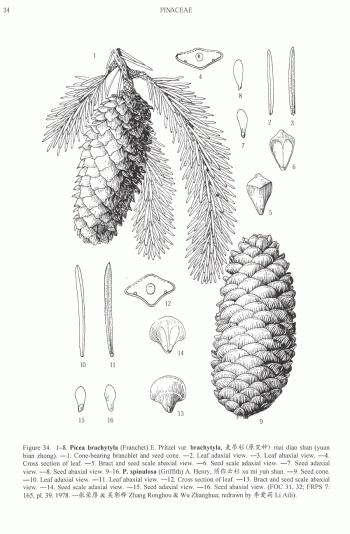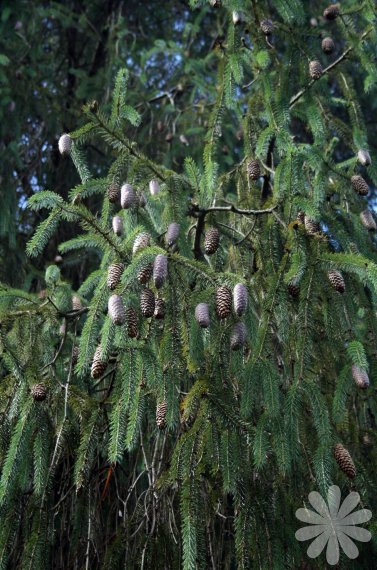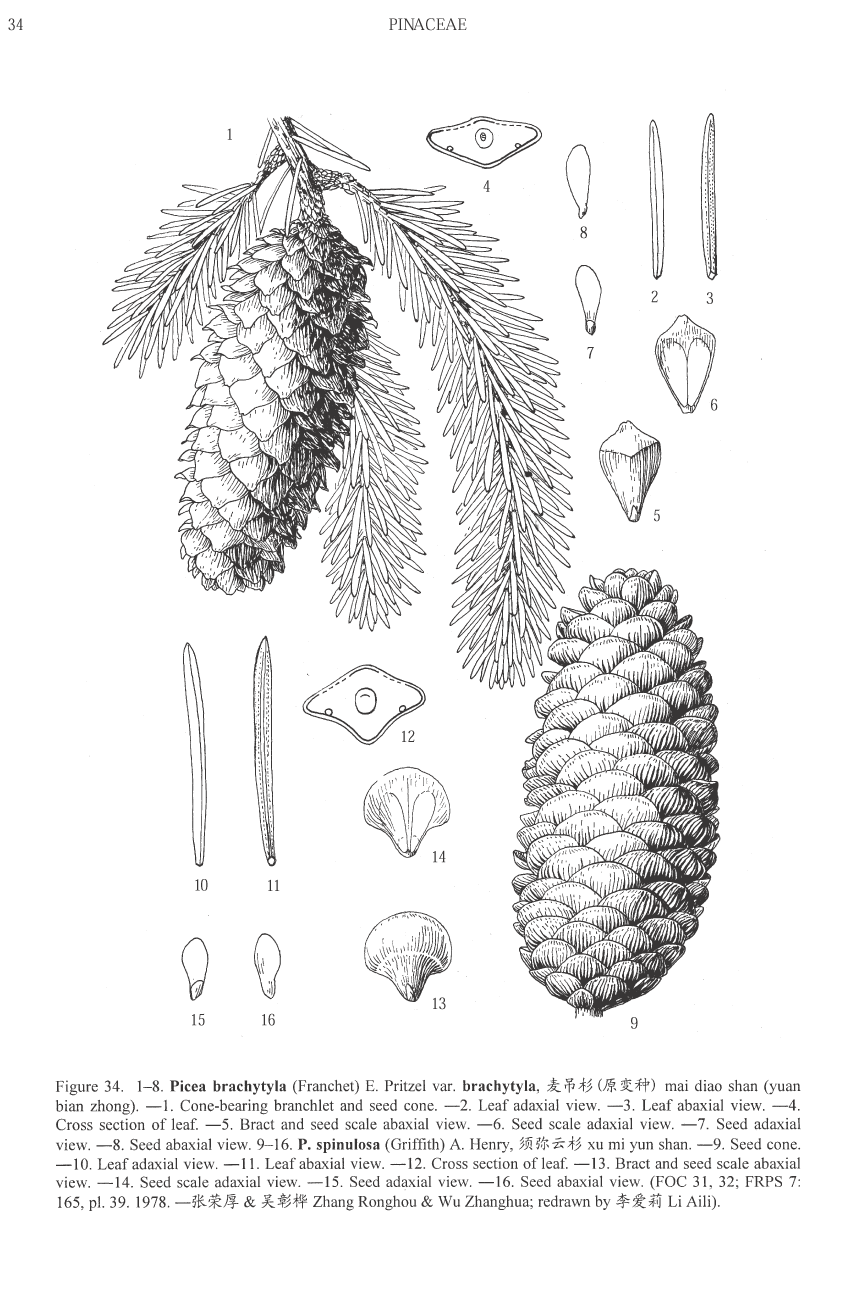
Picea spinulosa, as described in 1906 by (Griffith) Augustine Henry (1857-1930), in The Gardeners' Chronicle: a weekly illustrated journal of horticulture and allied subjects, series 3. Common names include Sikkim spruce in the English language; as well as 西è—äº‘æ‰ (xÄ«zà ng yún shÄn / Tibetan spruce) in Chinese. The species name translates into "full of small spines" in Latin, which aptly describes this conifer's needle structure.
According to W.H. Lang in his 1913 book, Makers of British Botany, this species was first collected by William Griffith (1810-1845), a remarkable botanist who collected over 12,000 species in his short life.
Description. Sikkim spruce is an evergreen coniferous species of tree that grows to mature heights of 130 to 180 feet (40 - 55 m) tall, exceptionally to 215 feet (65 m), and with a trunk up to 3 to 8 feet (1 - 2.5 m) in diameter, measured at breast height. Mature trees have a broadly conical crown with level branches and usually pendulous branchlets.
Hardy to UDSA Zone 8 - cold hardiness limit between 10° and 20°F (-12.1° and -6.7°C).
Ethnobotany. Sikkim spruce is occasionally grown as an ornamental tree in large gardens in western and central Europe for its attractive pendulous branchlets.


